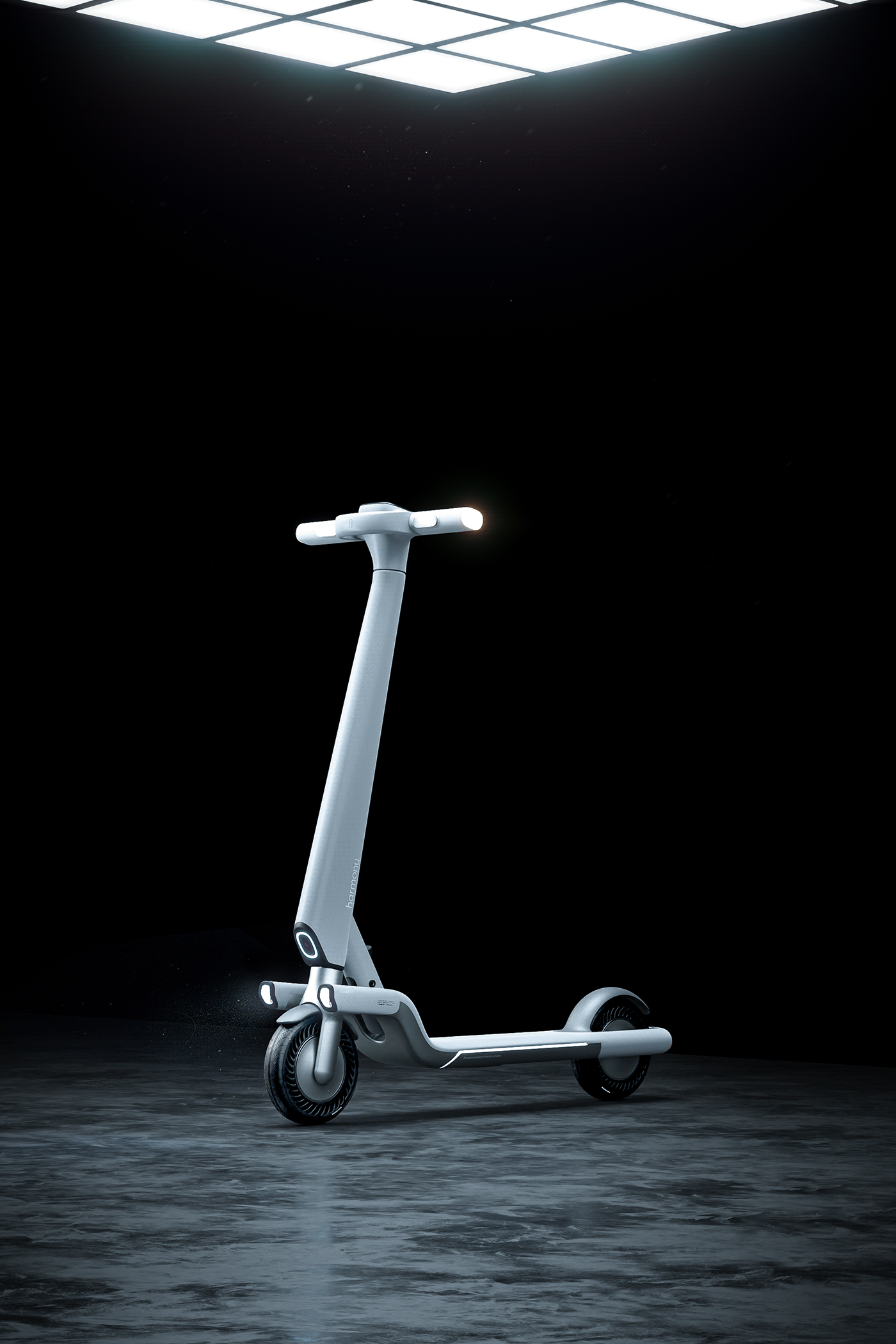
Harmony (2021)
: Smart guiding scooter
that solves the current safety and usability problems using its unique structure
Solo project
Hongik Univ. senior year degree show (BA)

The next evolution of electric scooters.
As personal mobility increases to blend into our urban lifestyle, there still remain unsolved safety and usability problems. Harmony provides a new form of solution for electric scooters and helps users enjoy a smarter and safer riding experience.
Background

Danger on road ㆍ Bad portabilityㆍ Unsafe charging
Current e-scooters are often
dangerous and problematic.
Many of the current personal mobility face the challenge of the three situations - while riding, while carrying, and while stored being charged. These situations are what limit the current experience, because they can often become very dangerous and difficult to use. Experiences like sudden accidents, heavy weight while carrying, or messy charging can all lead to the limitation of personal mobility blending in with our life.
Concept

Guiding projection light ㆍ Self-standingㆍ Wall-mounted charging
A reimagined form,
that follows the versatile functions.
Harmony is designed to help solve these problems in a minimal yet multipurpose structure. It projects guiding lights on the road to help navigate and prevent accidents while riding. It also folds and stands on its two legs, making portability and charging much more efficient. With its features and a sleek and futuristic design that portrays 'form follows function', it aims to enhance and seamlessly become a part of our daily city lifestyle.
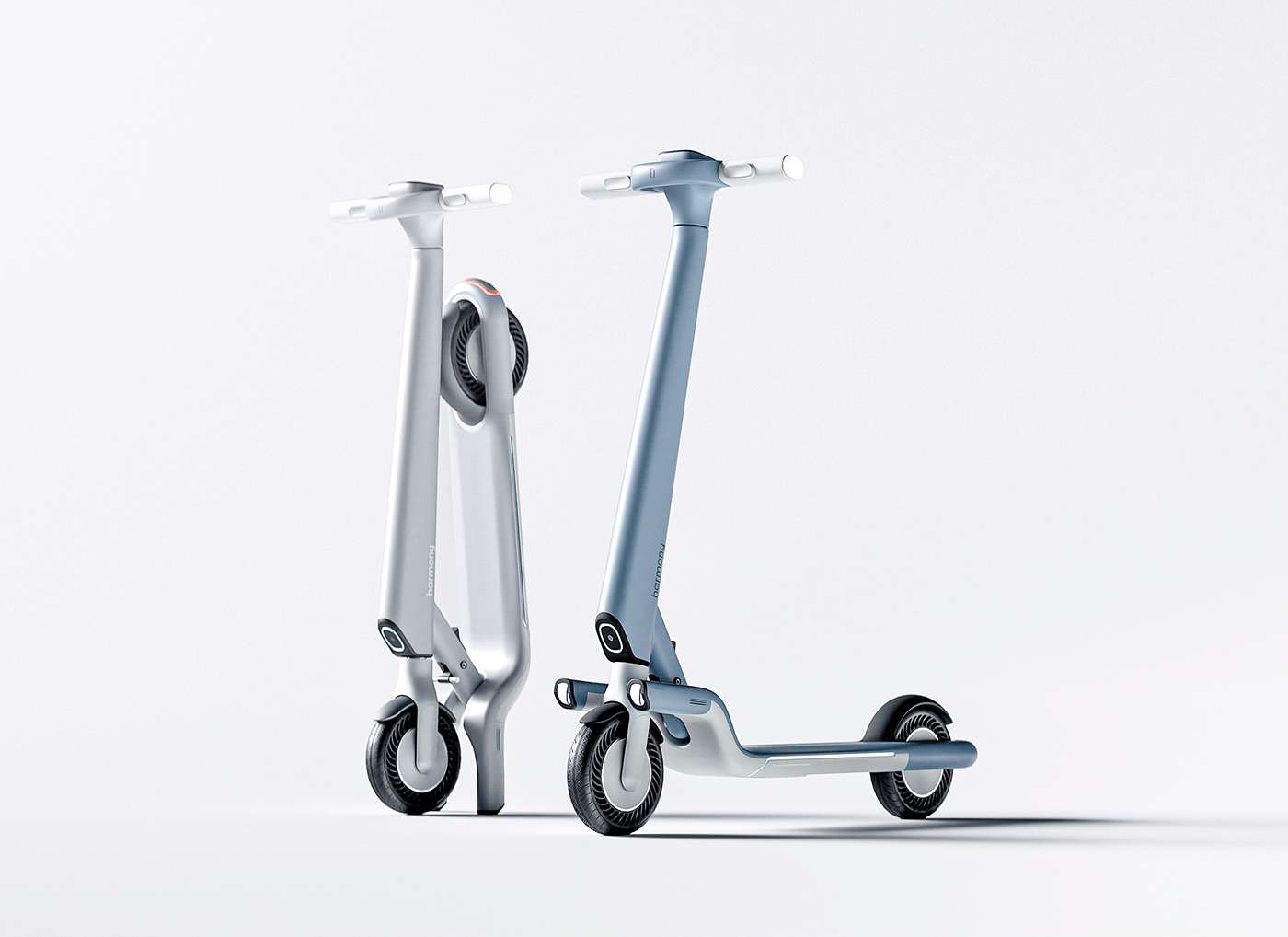


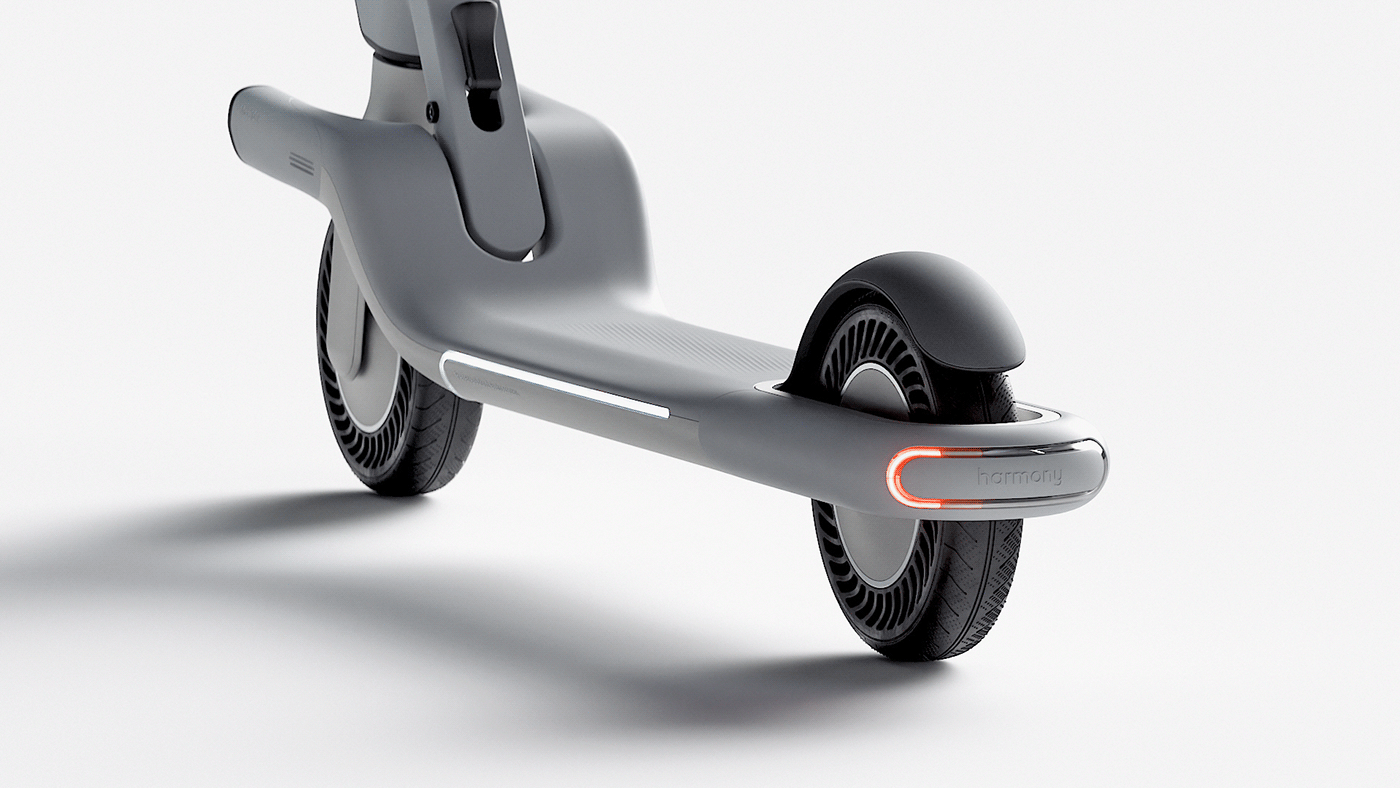


Lights guiding
through the night road.

Harmony uses projection light on the road to enhance the safety of electric scooters. Inspired by the headlight technology in automotive design, Harmony can help guide micro-mobility users of dangerous situations and prevent road casualties by detecting objects from the camera and projecting warnings.



Considering the environment of usage of micro-mobility, Harmony guides users using three main scenarios in which users can be assisted and guided, from navigation to driver-assistance warnings. Users can be informed or warned in advance, preventing sudden crashes.

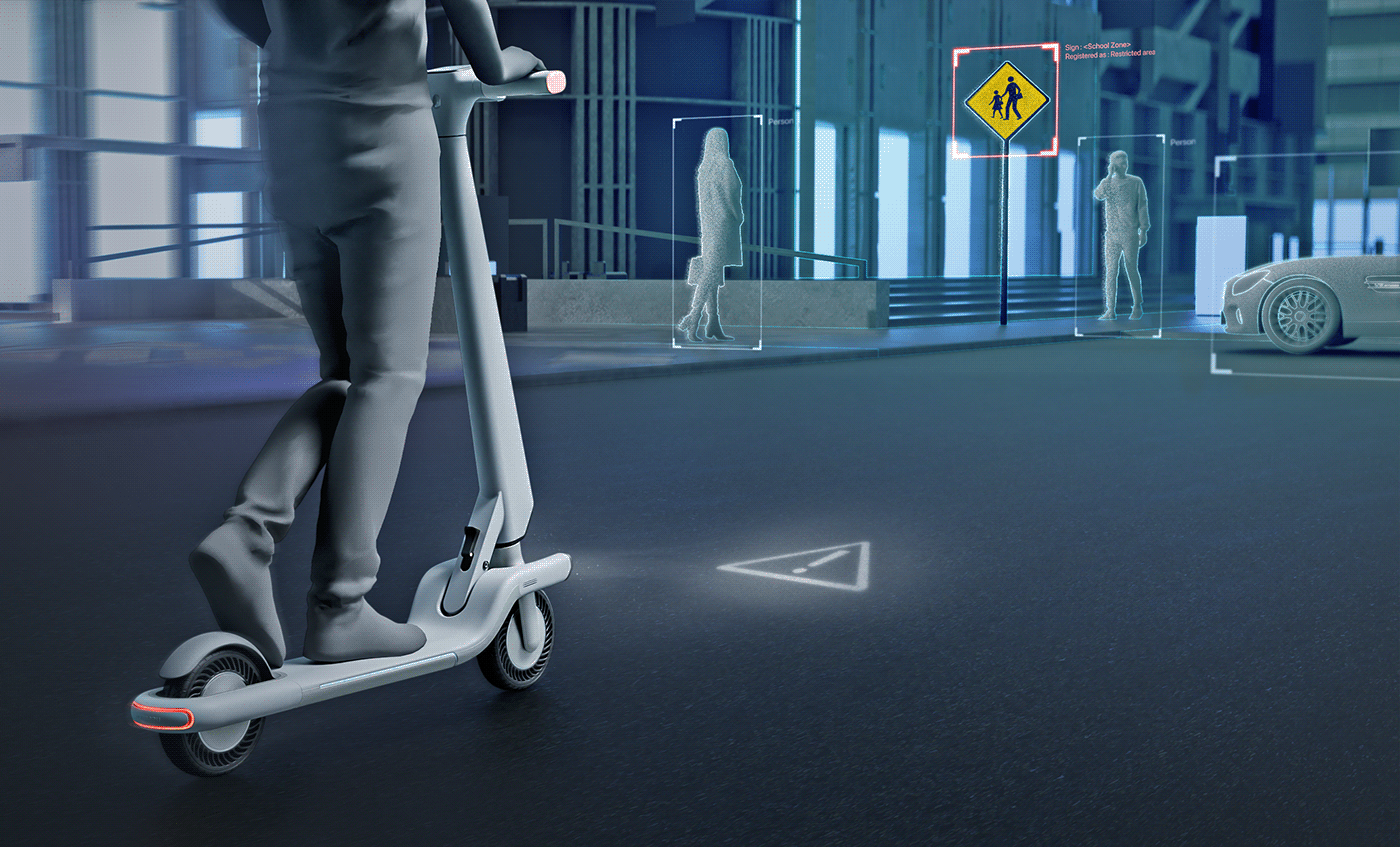
Warning

Navigation

Standing
on its own feet.

By folding Harmony, it can stand on its two feet. Unlike rental scooters, portability and storage becomes a huge pain point for privately owned scooters. With its vertical standing form, Harmony allows a much easier carrying experience, as it doesn’t need to be held. Also, it makes charging in houses much more user-friendly and space efficient.
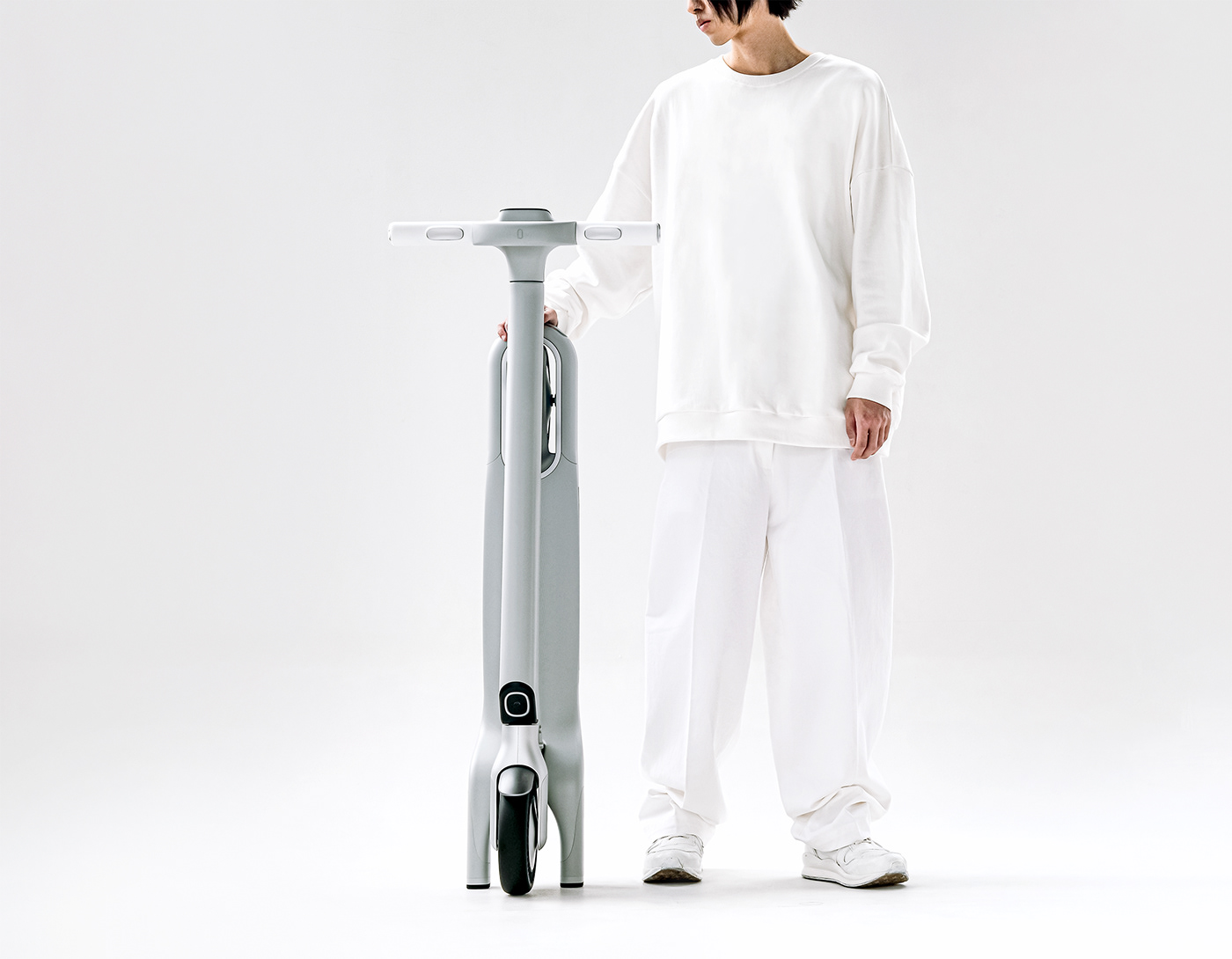

For
better portability
When using public transportation or going indoors, the user often has to lift or drag the entire heavy body. Instead, with Harmony standing by itself, there is no need to put in effort to even hold it.
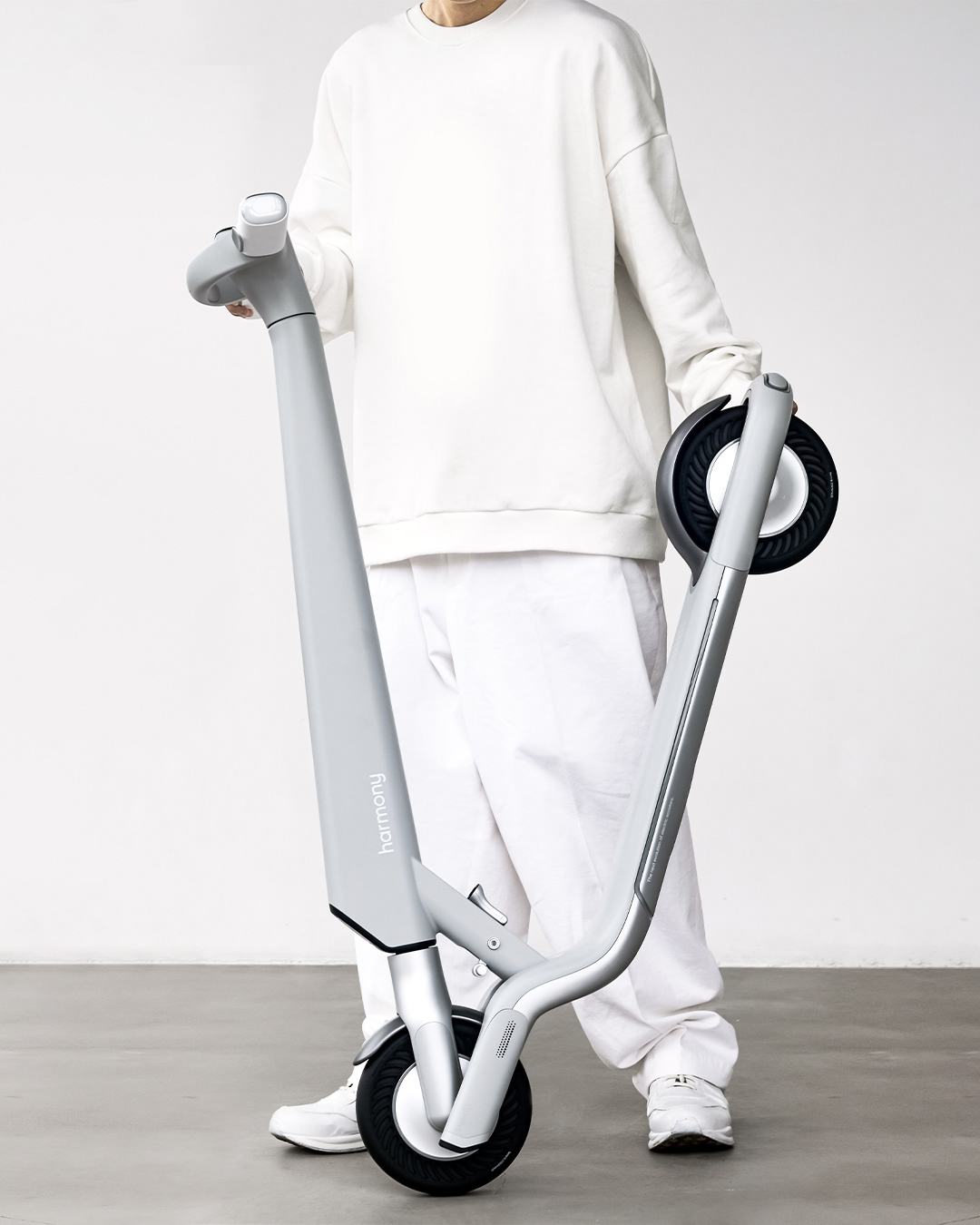

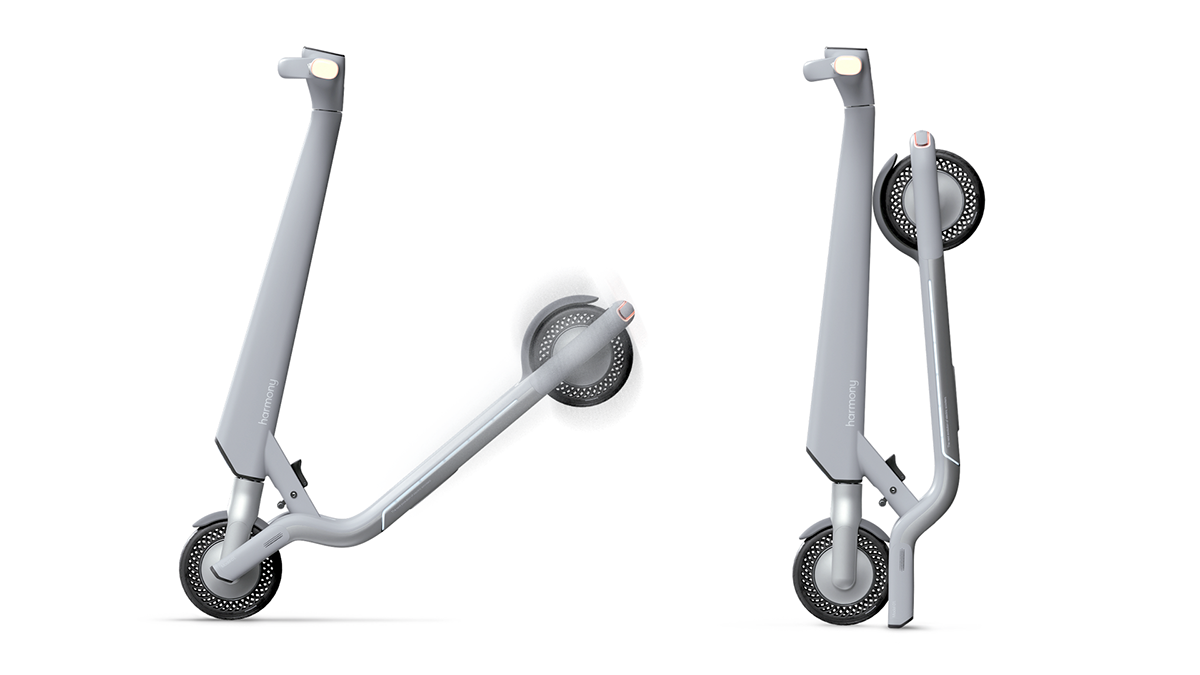
Harmony stands still with its rubber grip feet. It can also be easily moved around with the front handle that is connected on the top, and tilting the scooter will allow it to be wheeled around easily.


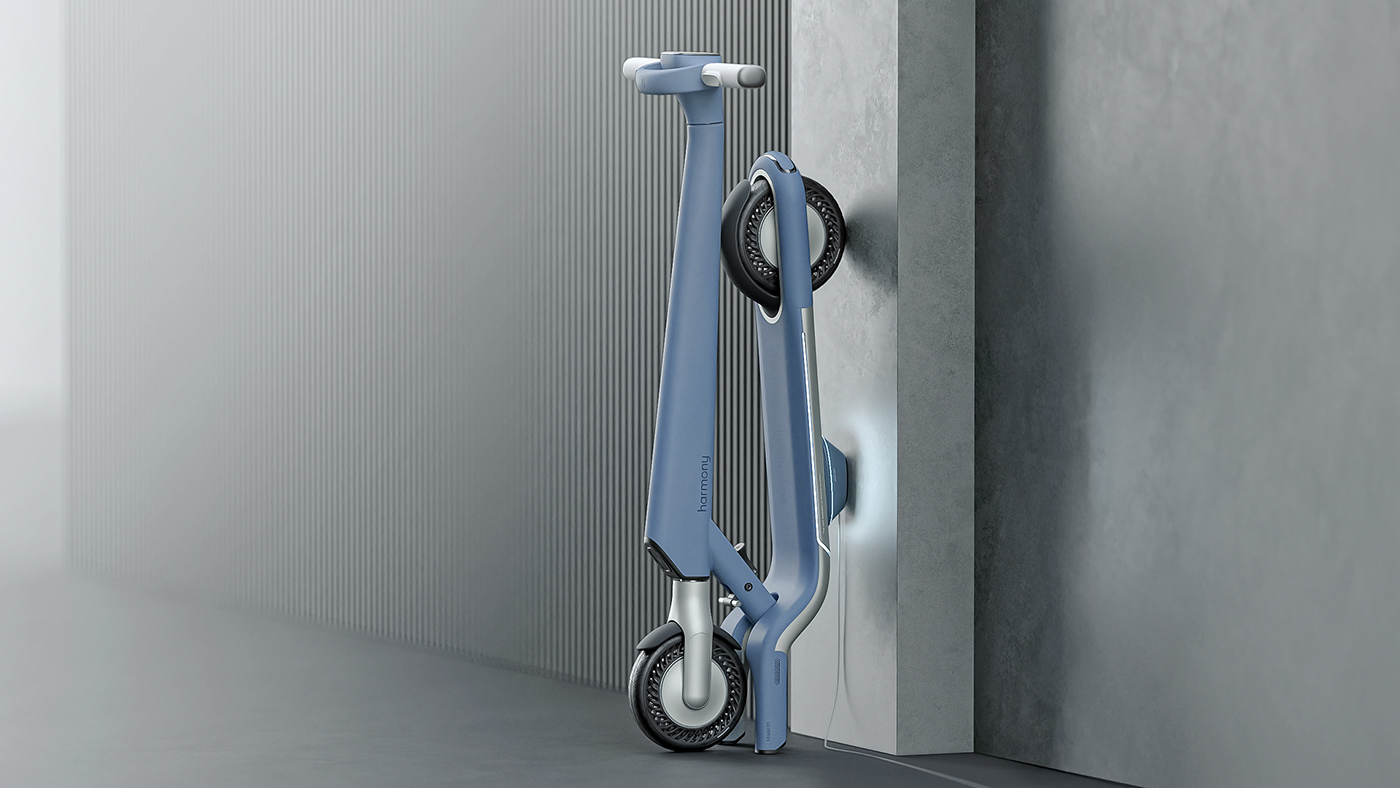
For
better storage
& charging
Current electric scooters hygienically and aesthetically challenging to charge in homes, alongside its big volume. Using wall-mounted wireless charging, Harmony makes the most out of the space in home, while keeping it safe and clean.


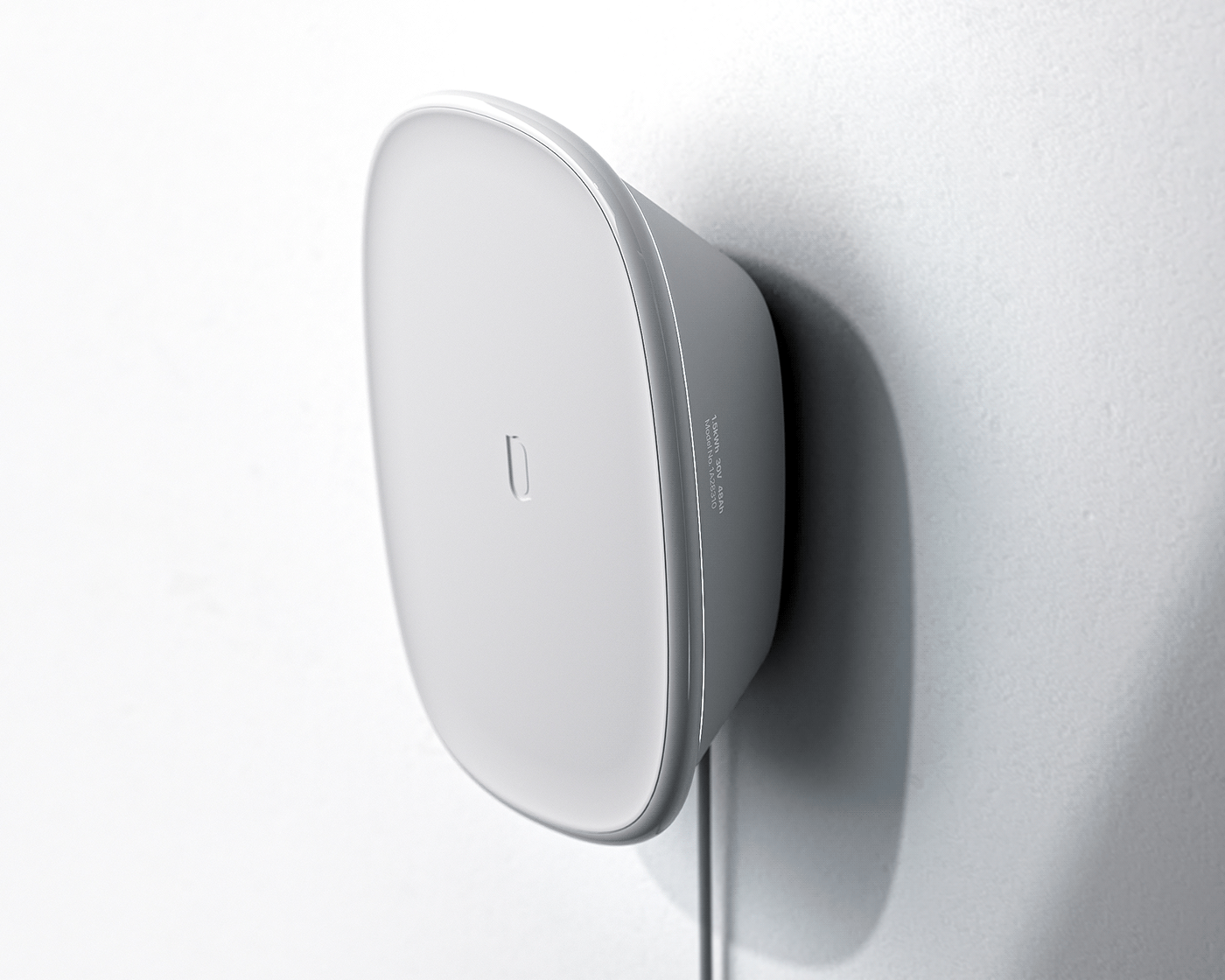
Wall-mounted wireless charger
The charger safely charges the scooter with the wireless charging coil, and enables easy attachment with a magnetic connection. With the design and materials matching the scooter, it truly completes its end-to-end user experience.
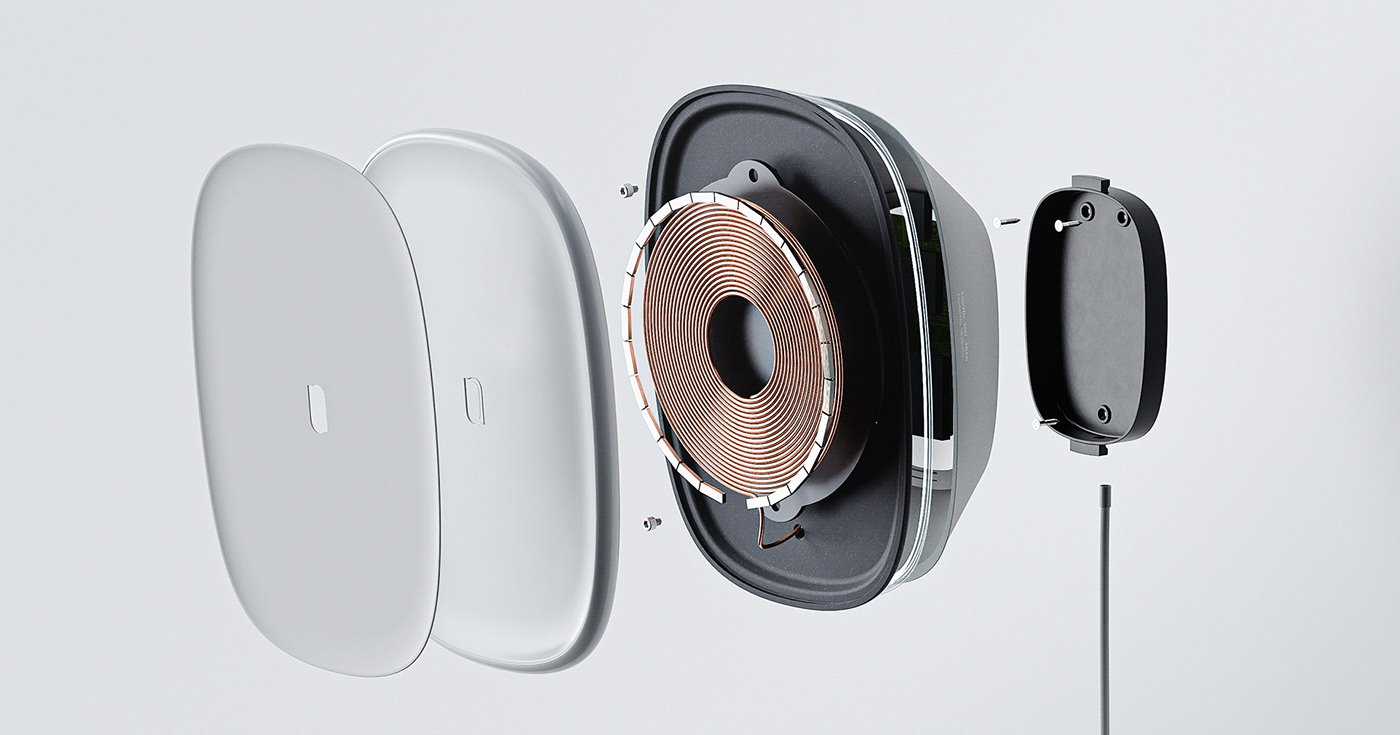
Details
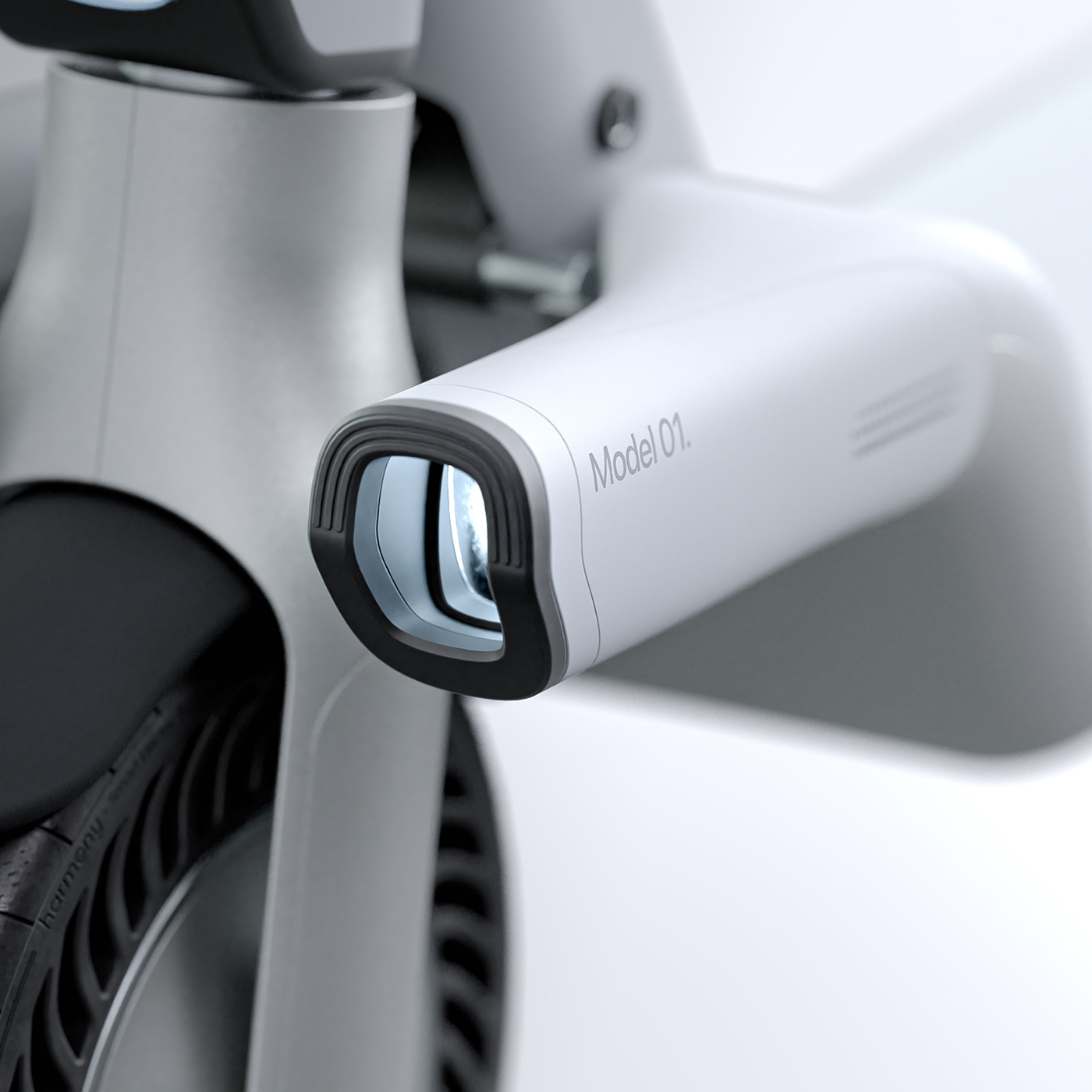
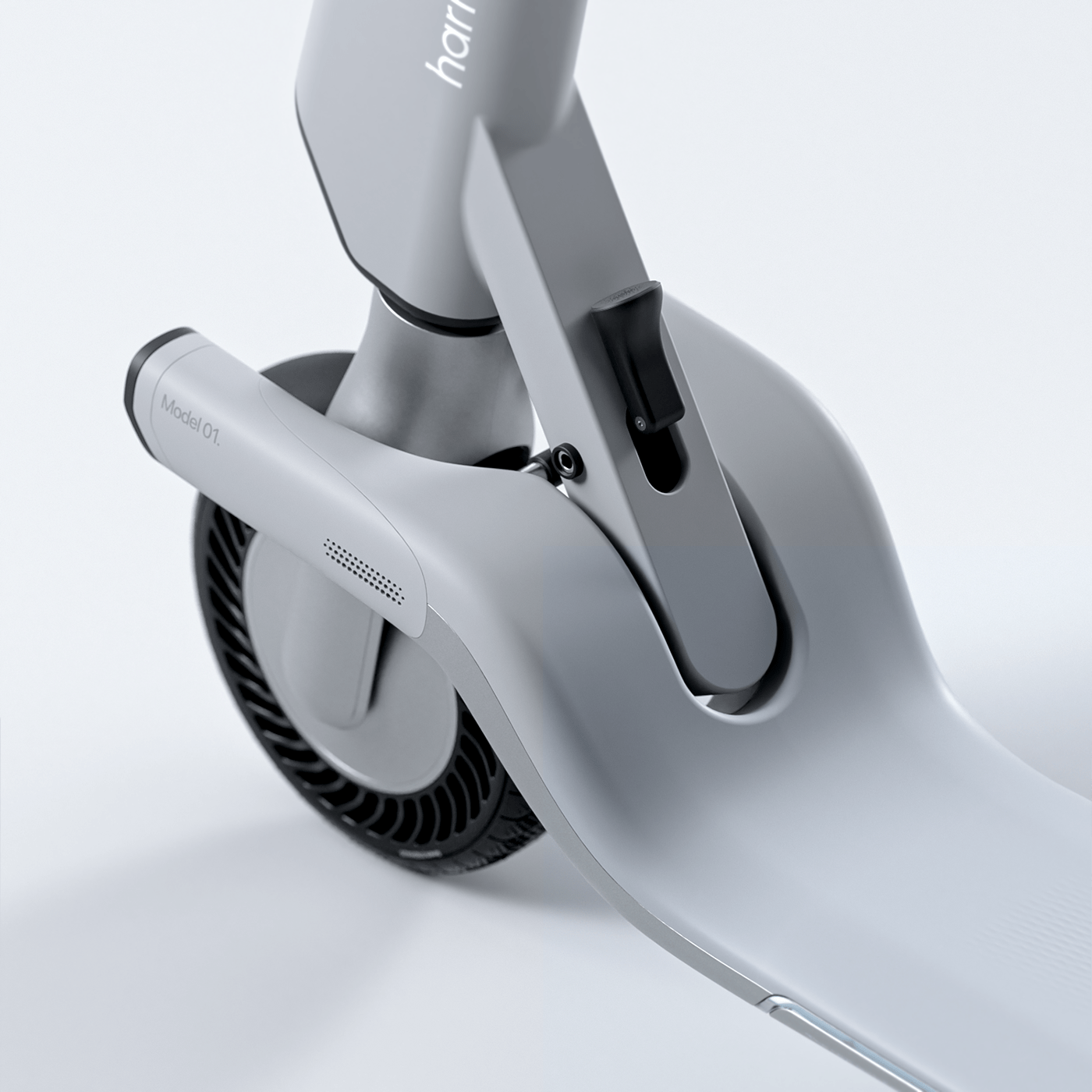



Handle interaction


App / Screen UI Workflow








Turn signal lights
Interaction and communication on the road has always been difficult with electric scooters, which could lead to unexpected crashes.
Harmony solves this issue using the signal lights on the handle and back of the scooter. With the intuitive left and right buttons located on the handles, users can send other road vehicles and pedestrians messages before the directional change.
Harmony solves this issue using the signal lights on the handle and back of the scooter. With the intuitive left and right buttons located on the handles, users can send other road vehicles and pedestrians messages before the directional change.
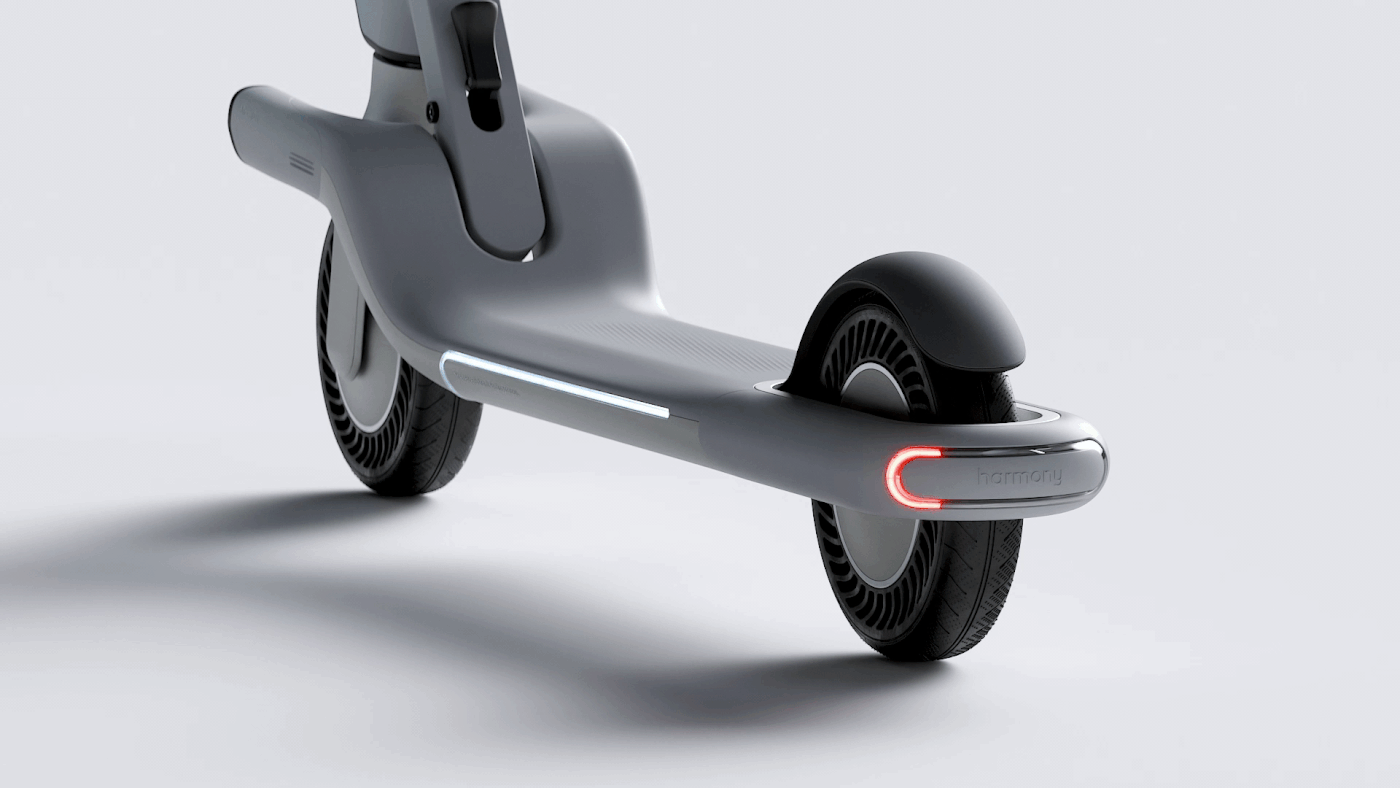


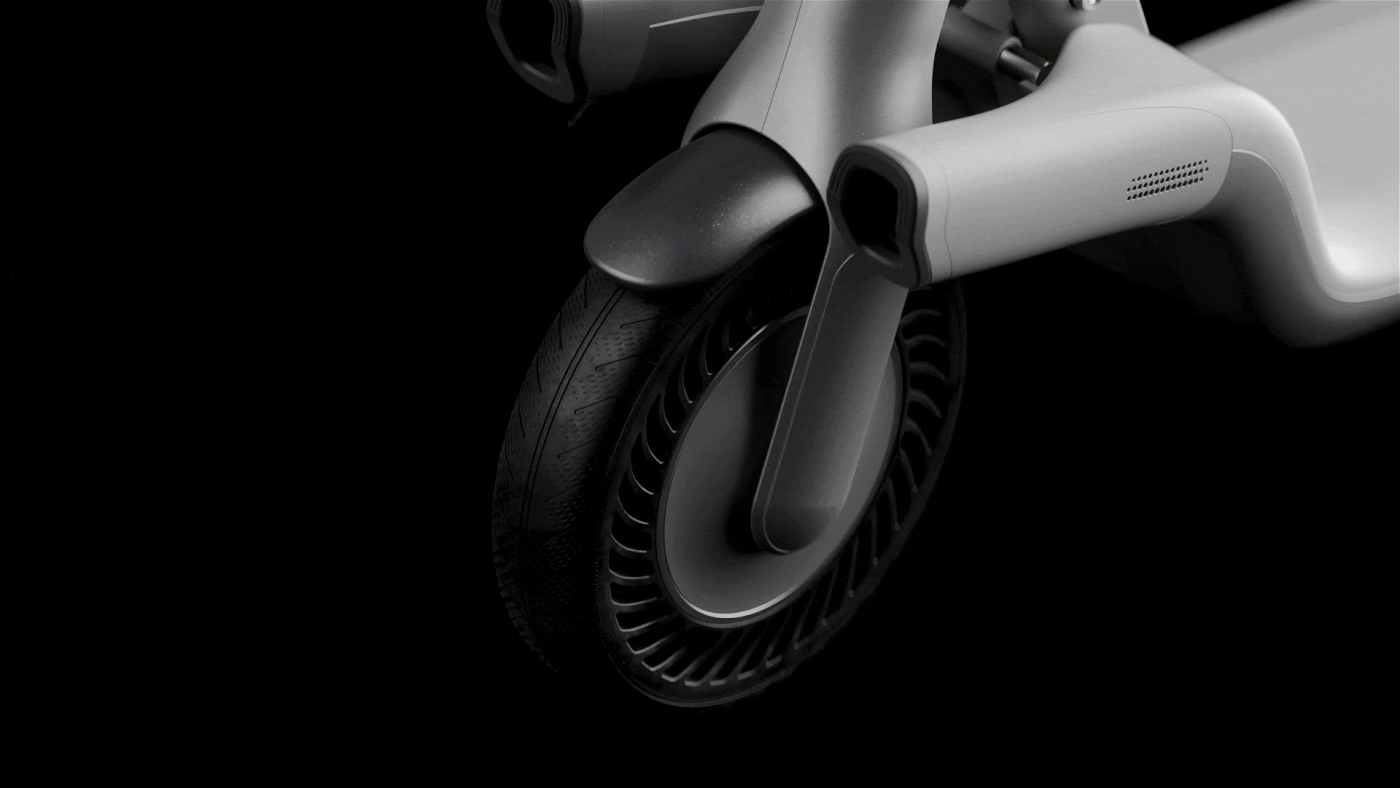



1:1 Real scale mock-up







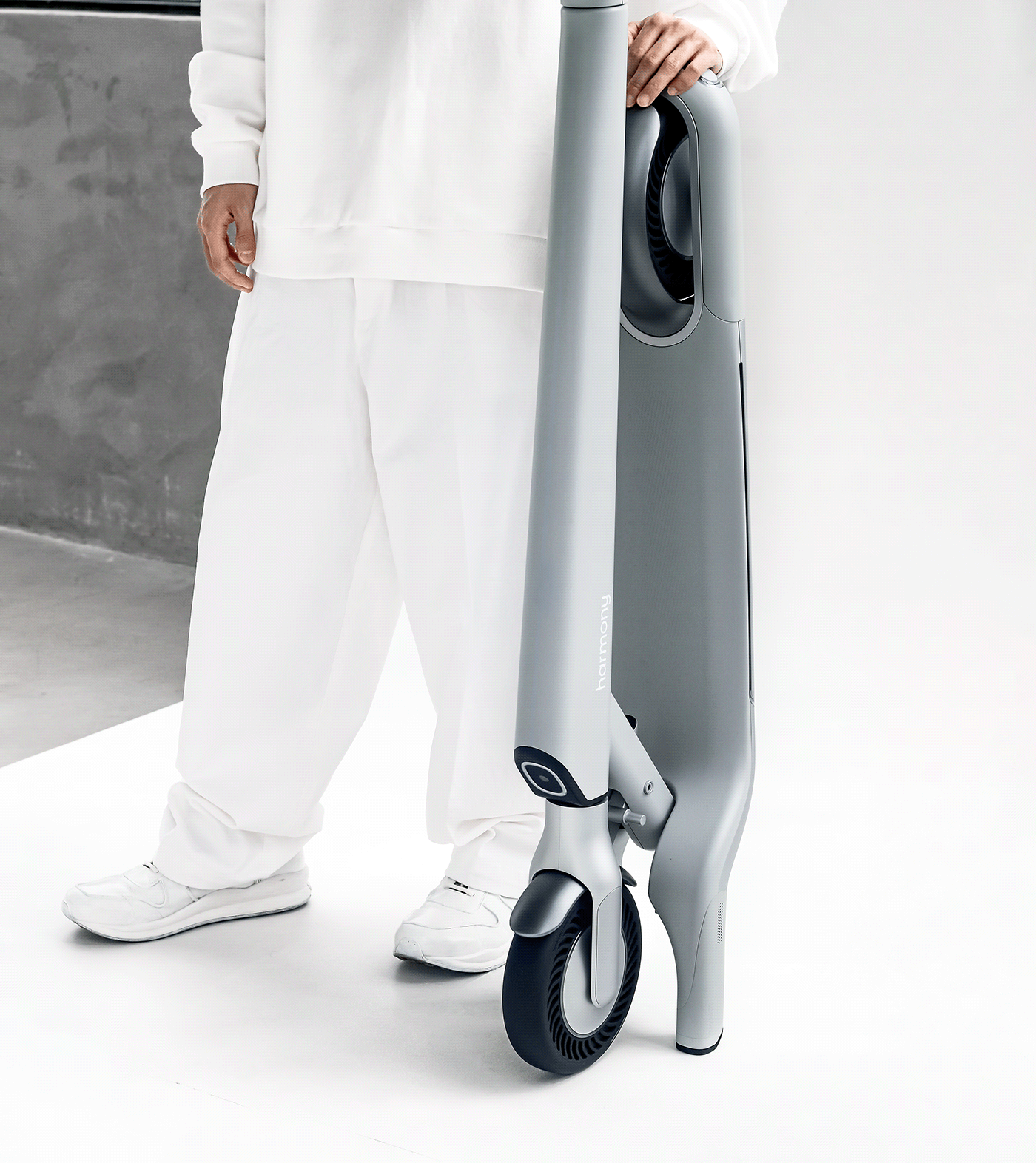
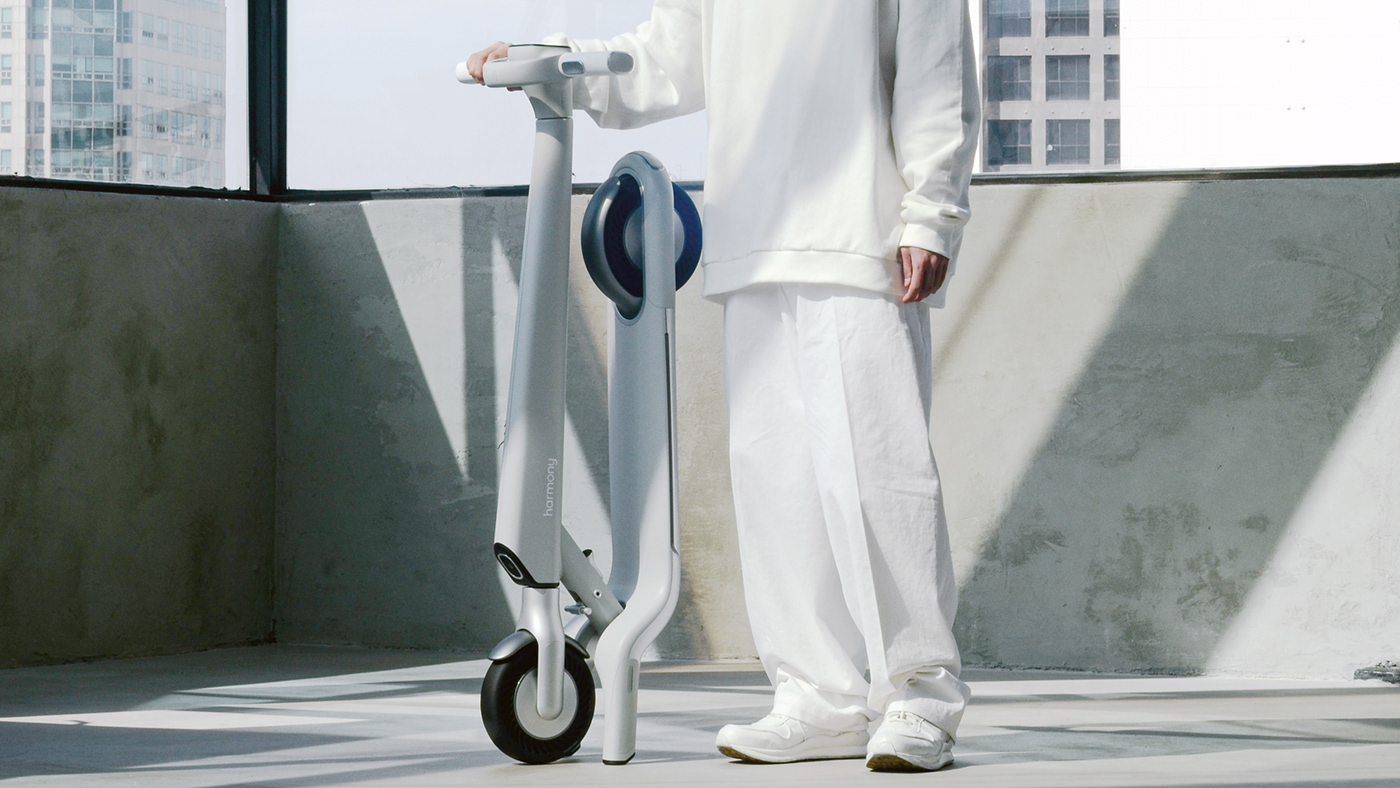
Process
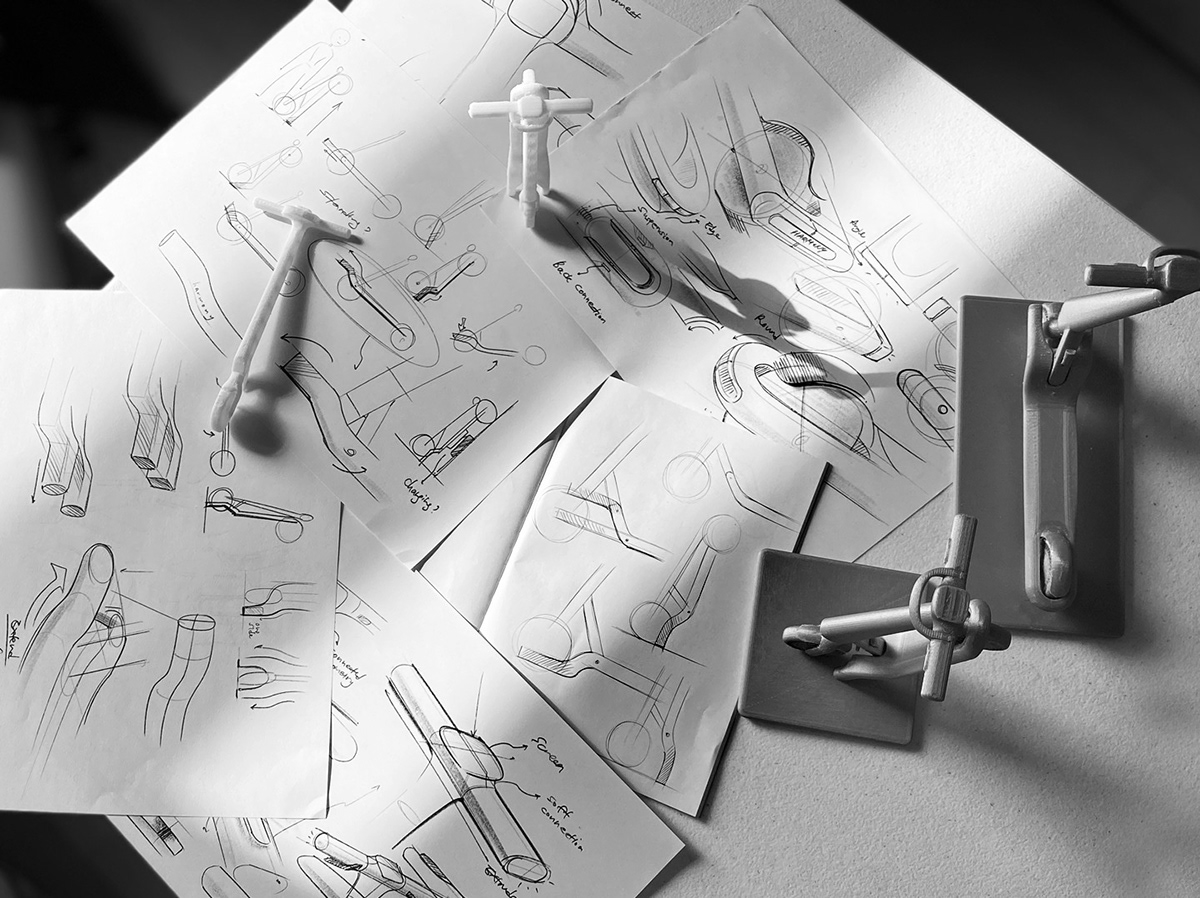
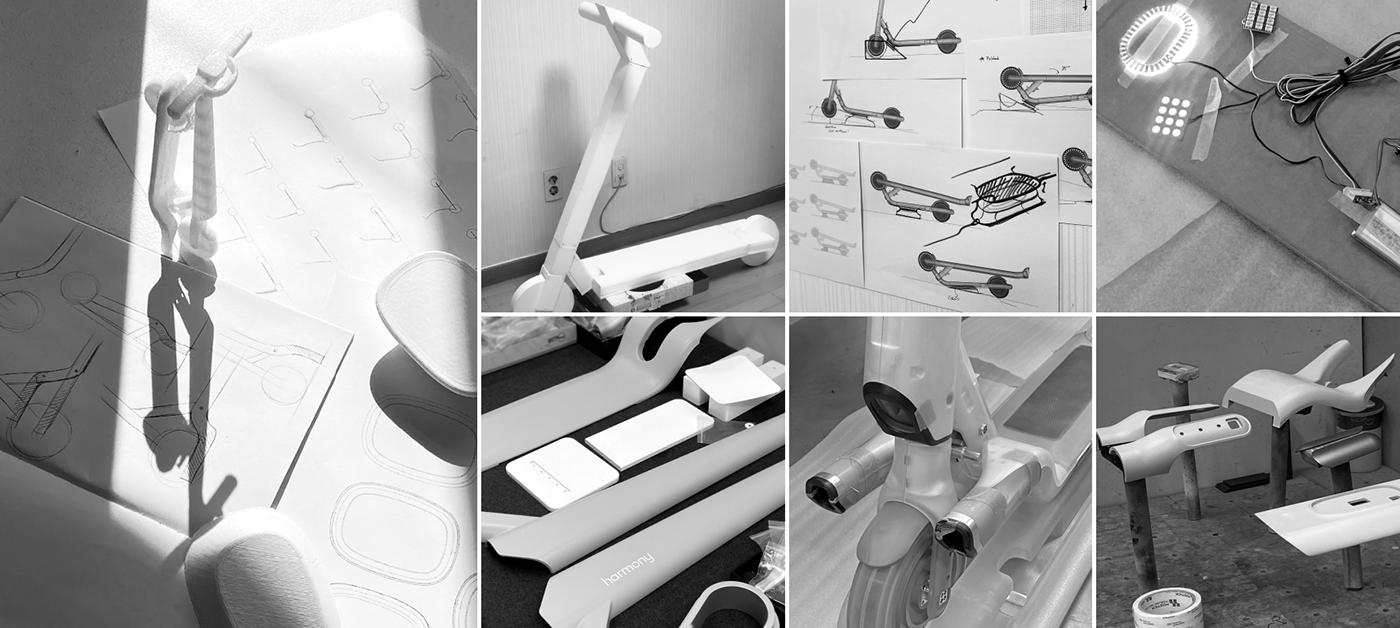


Start to end industrial design,
from big proportions to small details.
Harmony was designed in a spectrum from large proportions and functions, to small details and usability in mind. Starting with the concept and rough sketches, the idea was sooner developed with the combination of 3d modelling and printing. Since personal mobility is a product with a lot of different factors to consider, research of the current market products and materials was also a key to the project. All of this process, sometimes in a mixed procedure, ended with the final design of Harmony.
These considerations were also crucial in realizing it as a working prototype, not just a concept. By communicating and conveying design ideas with engineers and makers, Harmony was able to eventually be developed into a real-scale model.
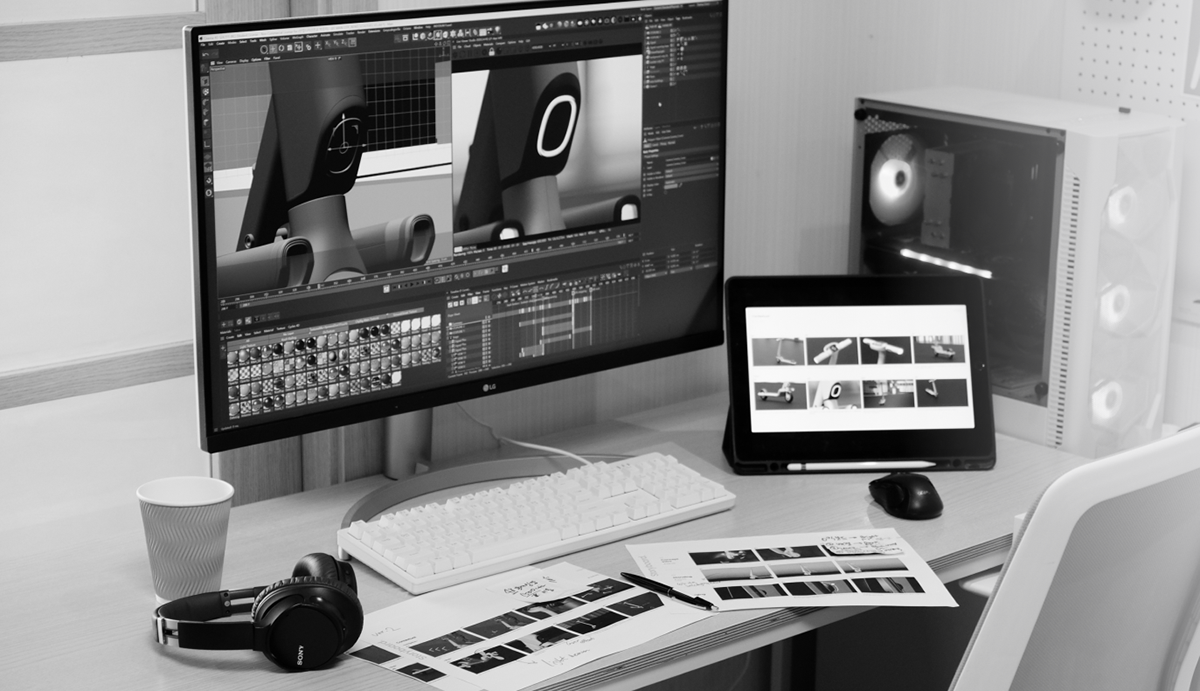
Motion graphic process
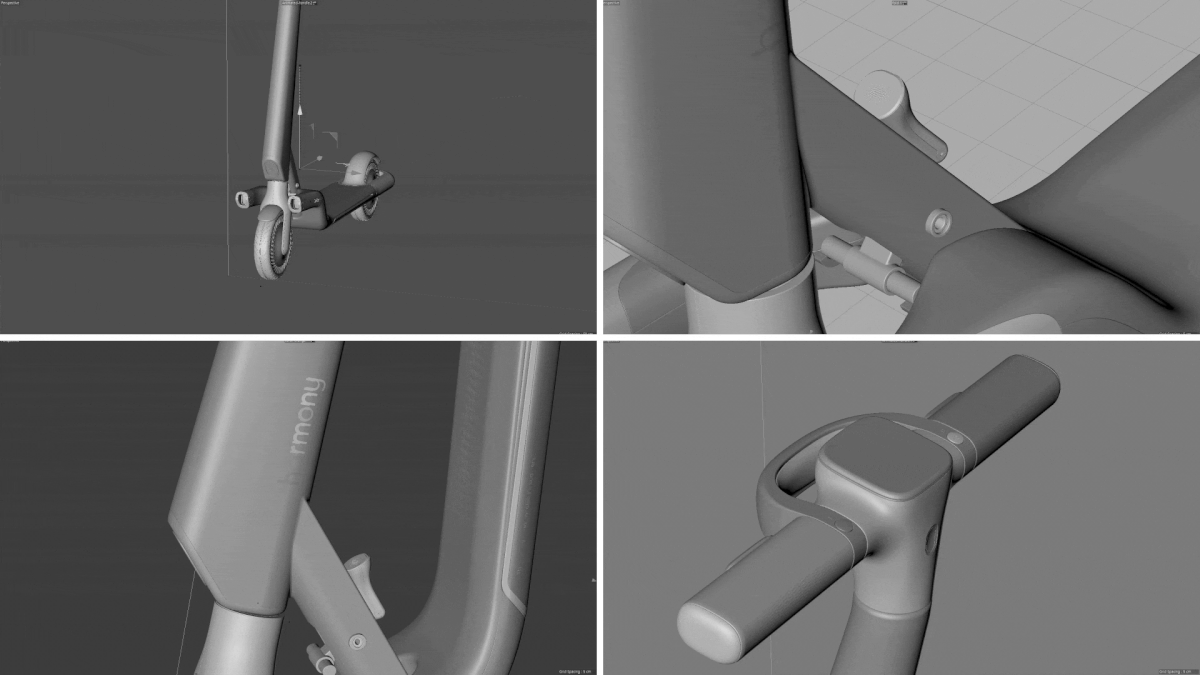










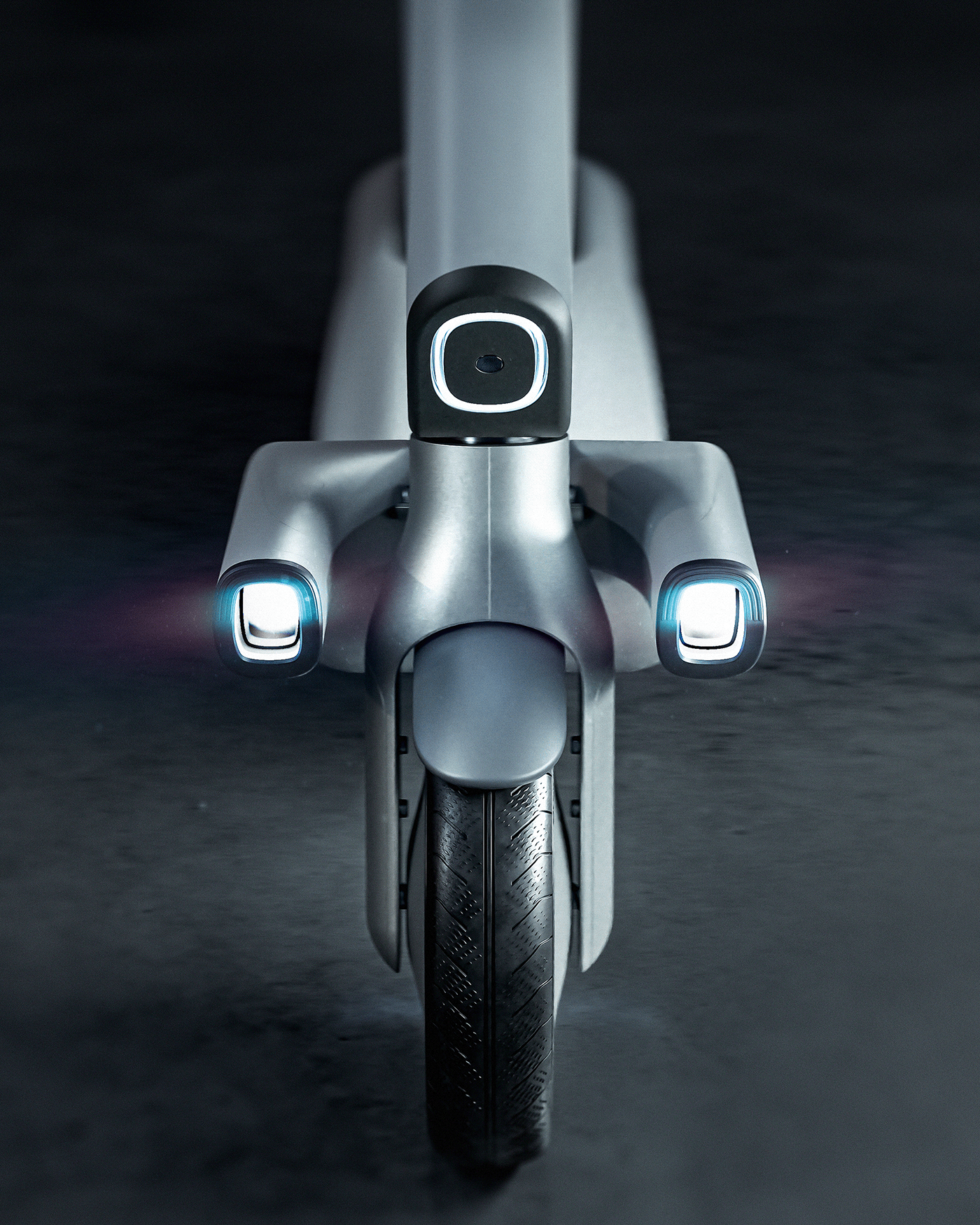
Harmony,
where your next journey begins.
Thank you.
Features
-
Contact
byminjco@gmail.com
instagram
Linkedin












